When you prescribe a generic drug, you’re not just writing a prescription-you’re stepping into a legal gray zone that didn’t exist two decades ago. Thanks to Supreme Court rulings in 2011 and 2013, generic drug manufacturers can’t be sued for failing to warn patients about side effects. That’s not a typo. Federal law blocks them from changing labels, so even if a drug causes severe skin damage, liver failure, or death, the company that made it is protected. And that leaves one person exposed: you, the doctor.
Why Generic Prescriptions Are Riskier Than You Think
Most prescriptions today are for generics-over 90% in the U.S. That’s great for cost savings. But here’s the catch: if a patient has a bad reaction, they can’t sue the manufacturer. The Supreme Court ruled in PLIVA v. Mensing and Mutual Pharmaceutical v. Bartlett that generic makers aren’t liable for inadequate warnings because they must copy the brand-name label exactly. No changes allowed. So when Karen Bartlett lost 65% of her skin after taking generic Sulindac, she couldn’t hold the maker responsible. Her only legal path? Sue the doctor who prescribed it.
That’s the new reality. You’re now the last line of defense. If a patient suffers harm from a generic drug, and the manufacturer can’t be sued, your name ends up on the lawsuit. Courts are seeing a 37% spike in physician-targeted cases involving generics between 2014 and 2019. And it’s not just rare side effects. Even common ones-drowsiness, dizziness, nausea-can lead to accidents. If a patient drives after taking a sedating generic and crashes, you could be held liable for not warning them.
What the Law Says About Your Duty
Medical malpractice law hasn’t changed. To prove liability, a plaintiff must show three things: you had a duty to the patient, you broke that duty, and it directly caused harm. But now, the definition of "broken duty" has expanded. Prescribing a generic isn’t enough. You have to actively manage the risks.
Take warfarin. It’s a blood thinner with a narrow therapeutic index. A small dose change can cause a stroke or internal bleeding. Many states require you to write "dispense as written" on the prescription if you’re prescribing it-otherwise, the pharmacist can swap it for a different generic. But even if you don’t write that, you still have to document that you told the patient about the risks of switching. If you just say, "I discussed the medication," and the patient later has a bleed, that’s not enough. Your note needs specifics: "Warned patient that switching generics may alter INR levels; advised to monitor for bruising or dark stools."
Same goes for levothyroxine, anti-seizure drugs, or antidepressants. The American Medical Association says you must document counseling for any drug where small changes can cause big problems. Electronic health records now have mandatory fields for this. Epic Systems added them in 2021. If you skip it, your documentation won’t hold up in court.
The State-by-State Patchwork You Can’t Ignore
Not all states treat generic liability the same. In Illinois, a court ruled in Guvenoz v. Target that generic makers can be held responsible if a drug is inherently dangerous. They have to change the label, change the formula, or stop selling it. That’s a rare exception. In most states, you’re on your own.
And it gets messier. In Alabama, a 2014 court briefly let patients sue brand-name makers for injuries caused by generics. That gave doctors a little breathing room. But in 2015, the state legislature passed a law shutting that door. Now, even the original maker is off the hook. You’re the only target left.
Thirty-two states require pharmacists to notify you within 72 hours if they switch a brand to a generic. Seventeen states don’t require any notice at all. So you might not even know your patient got a different version. That’s a problem if the new generic has a different inactive ingredient that triggers an allergy or interaction. You’re still liable-even if you didn’t know the swap happened.
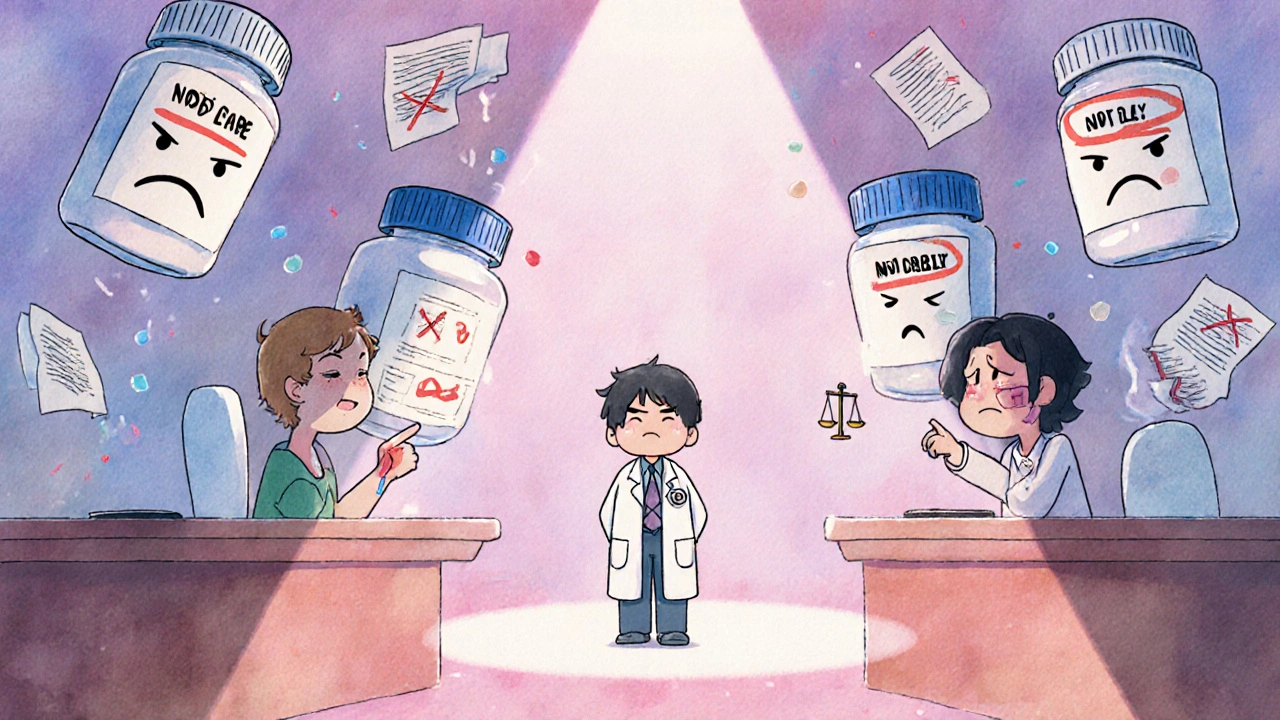
How Doctors Are Changing Their Practice
A 2022 AMA survey of 1,200 physicians found that 68% feel more anxious prescribing generics. Over 40% admit they sometimes choose the more expensive brand-name drug just to avoid liability. One doctor in Massachusetts said he now adds 15-20 minutes to every visit just to document side effect warnings. He prints out handouts, signs them, and files them in the chart.
Another physician posted on a medical forum: "My patient developed Stevens-Johnson syndrome after a generic substitution. The manufacturer can’t be sued. Now I’m being sued. I followed every guideline. But the law doesn’t care.”
Insurance companies are catching on. Premiums for primary care doctors have jumped 22.7% since 2013. If you routinely authorize generic substitutions without detailed counseling notes, your malpractice insurer may add a 7.3% surcharge. That’s not a small fee-it’s a financial penalty for skipping documentation.
What You Must Do to Protect Yourself
There’s no magic bullet. But there are clear steps that reduce your risk:
- Use "dispense as written" for drugs with narrow therapeutic windows: warfarin, levothyroxine, phenytoin, lithium, cyclosporine.
- Document specific warnings in your EHR. Don’t say "medication discussed." Say: "Explained that [drug] may cause dizziness; advised not to drive or operate machinery for first 7 days. Patient acknowledged understanding."
- Check your state’s substitution laws. Know if your state requires pharmacist notification. If not, assume the patient got a different version.
- Don’t assume generics are identical. Even if they’re bioequivalent, inactive ingredients vary. Some cause allergic reactions. Others affect absorption.
- Use printed patient handouts. Give them a one-page summary of side effects. Have them sign it. File it.
Medical Risk Management Inc. found that doctors who follow these steps reduce their liability exposure by 58%. That’s not just a number-it’s the difference between a dismissed claim and a $300,000 settlement.
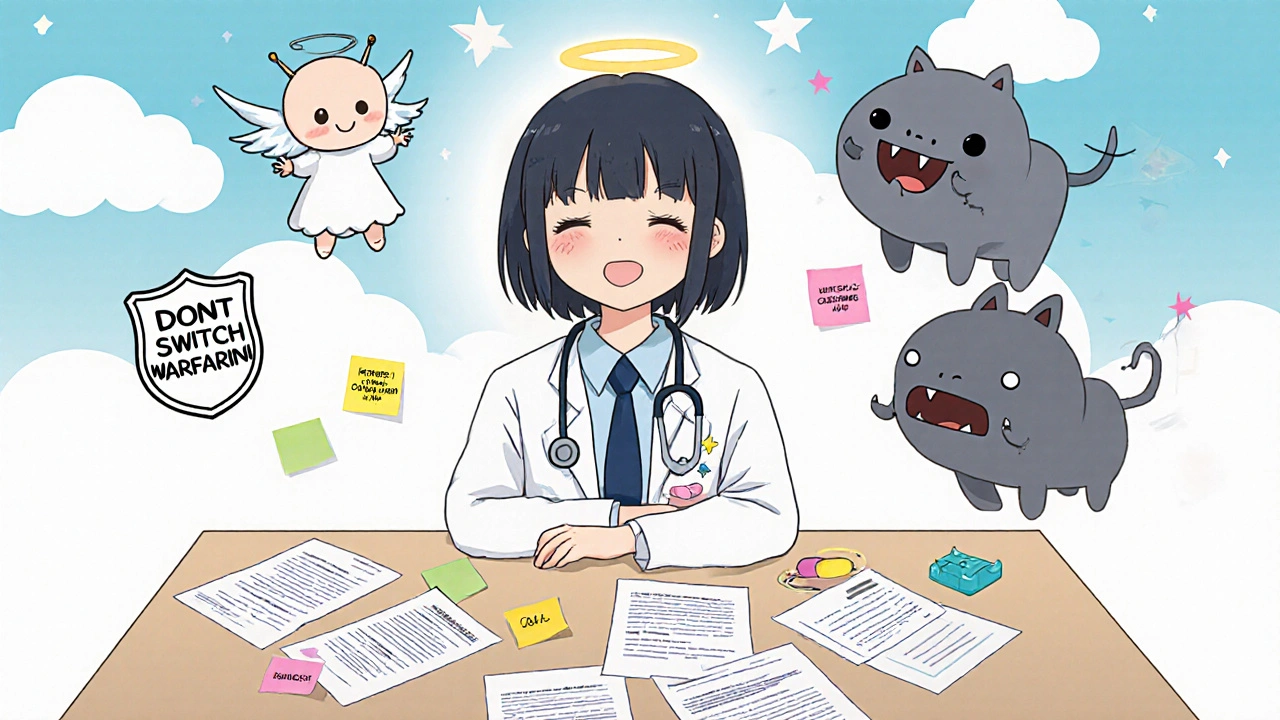
The Bigger Picture: Why This Keeps Getting Worse
Generic drugs make up 90% of prescriptions. That number keeps rising. Meanwhile, the legal system hasn’t adapted. Congress has considered bills like H.R. 958 to restore liability to manufacturers. None have passed. The pharmaceutical industry spent over $14 million lobbying against such changes since 2011.
The 9th Circuit Court made a small crack in the wall in 2023, allowing lawsuits against generic makers if the brand-name label was updated and the generic didn’t follow. But that’s narrow. It doesn’t help most patients. And it doesn’t change the fact that you’re still the primary target.
Harvard’s Aaron Kesselheim predicts physician lawsuits involving generics will rise 45% by 2027. That’s not speculation. It’s the logical result of a legal system that removed manufacturer accountability and left doctors holding the bag.
What’s Next?
You can’t control the law. But you can control your documentation, your communication, and your choices. Every time you write a prescription, ask: Is this a high-risk drug? Did I tell the patient what could go wrong? Did I write it down in a way that would hold up in court?
If you don’t, you’re not just risking a lawsuit-you’re risking your license, your reputation, and your peace of mind. The system is broken. But your practice doesn’t have to be.

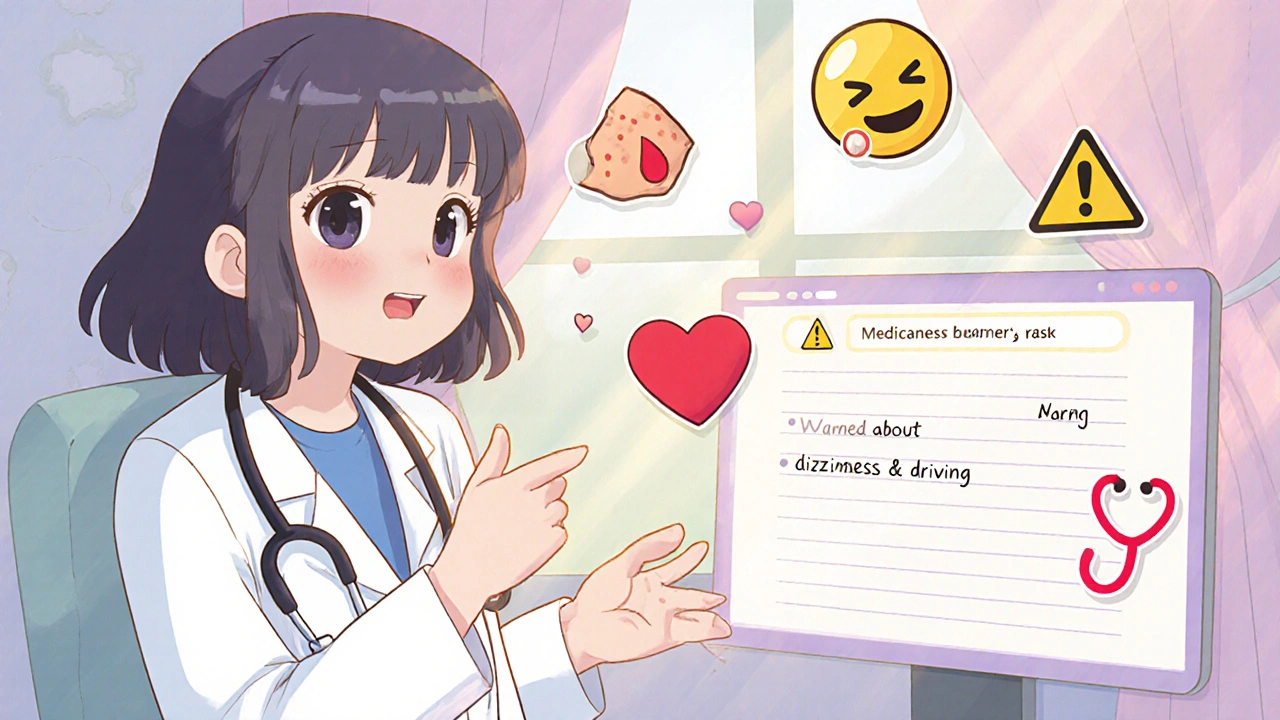



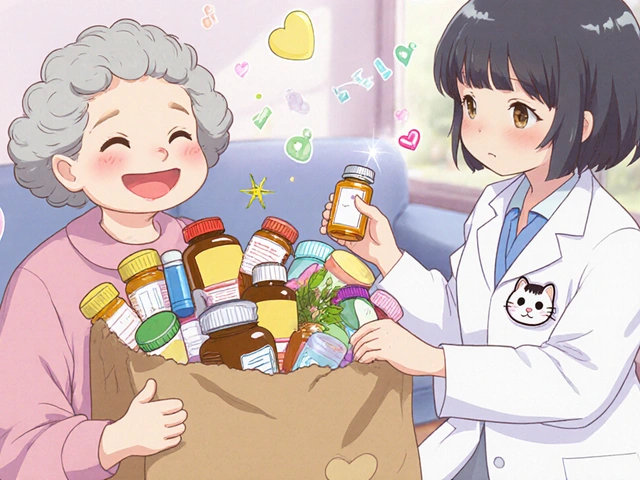
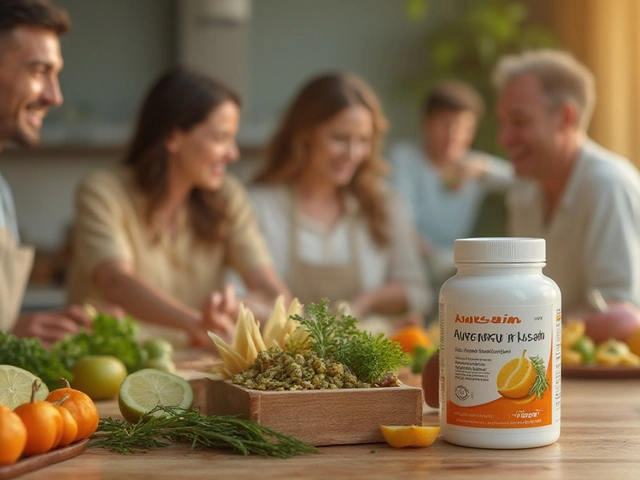
Andrew Camacho
November 25, 2025So let me get this straight-pharma companies get a free pass to sell potentially deadly drugs because they’re ‘just copying labels,’ but the doctor who actually talks to the patient is the one who gets sued? That’s not justice, that’s a corporate loophole dressed up as law. I’ve seen patients die because a generic switched their inactive ingredients and no one told them. And now we’re supposed to be the sacrificial lambs? No thanks. I’m prescribing brand-name for anything with a narrow window, and I’m not apologizing for it. The system is rigged, and we’re the ones getting burned.